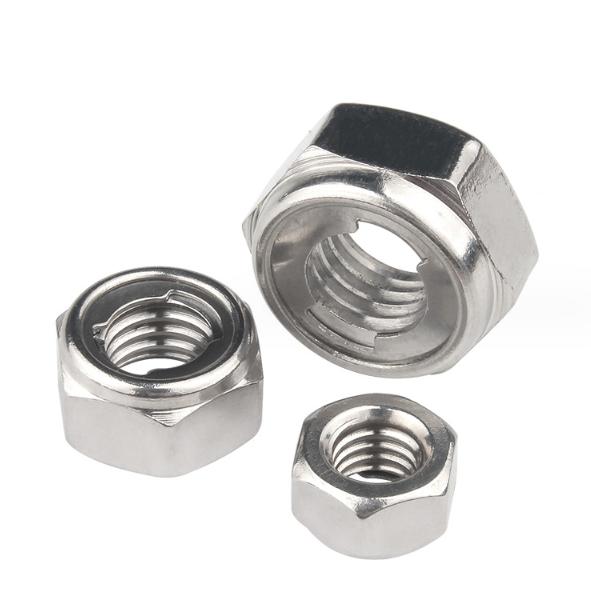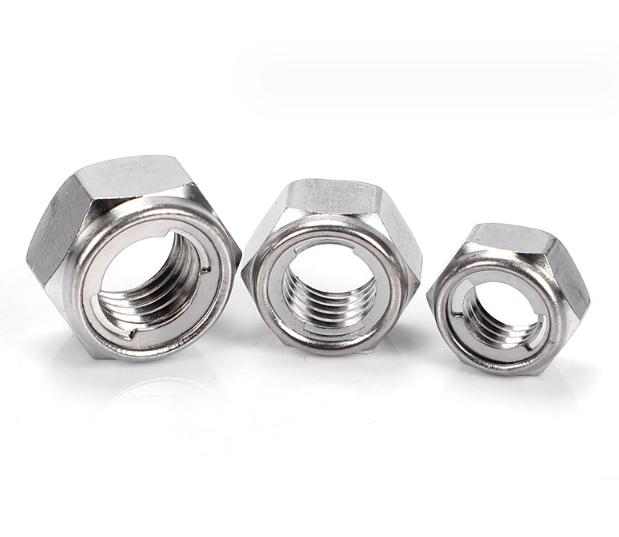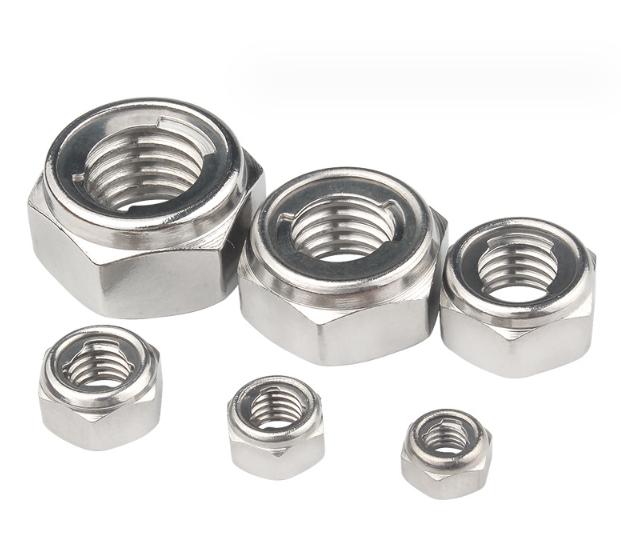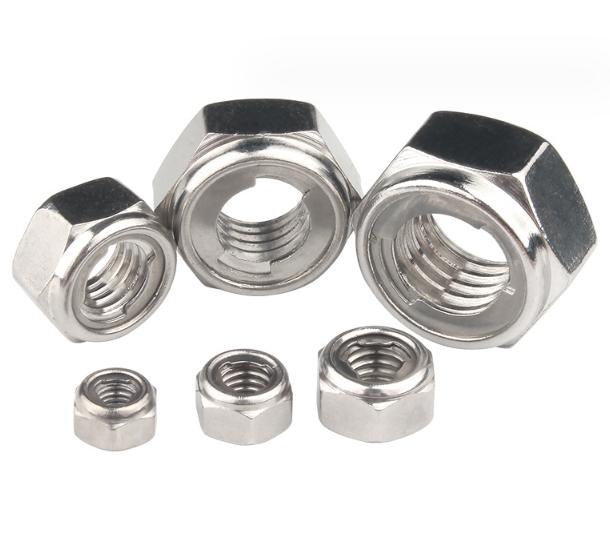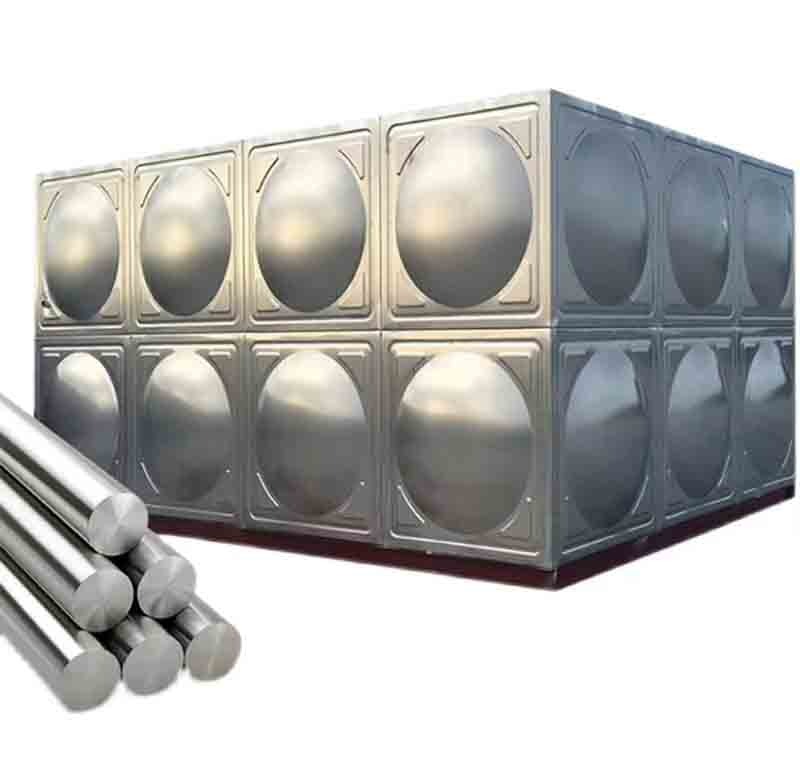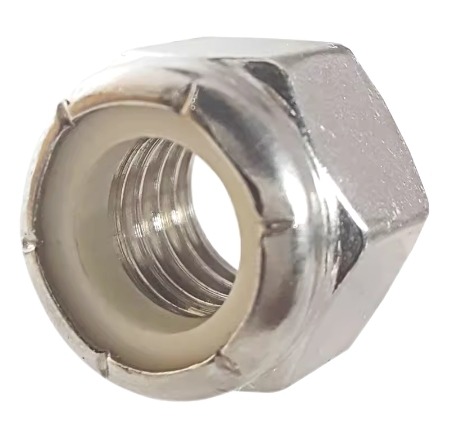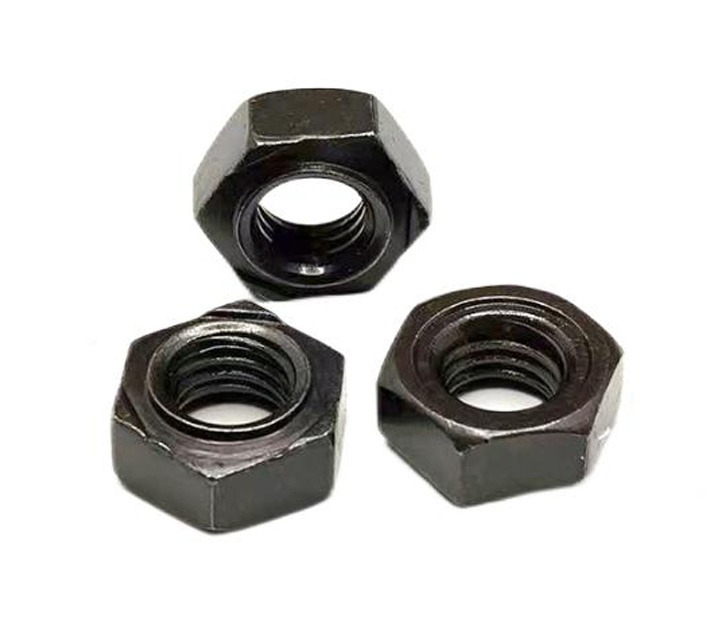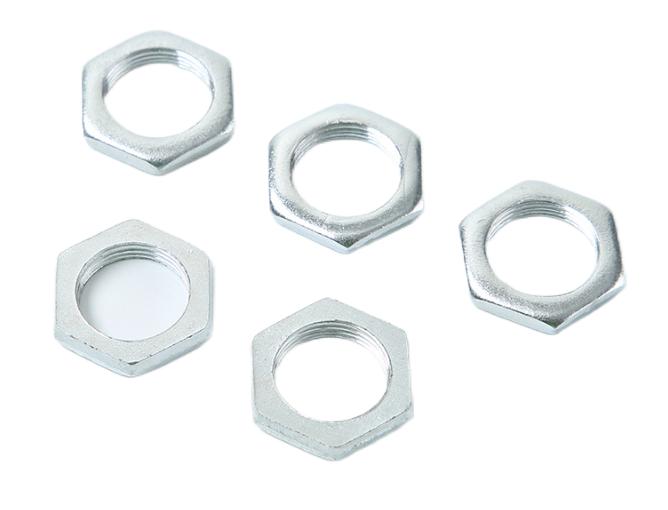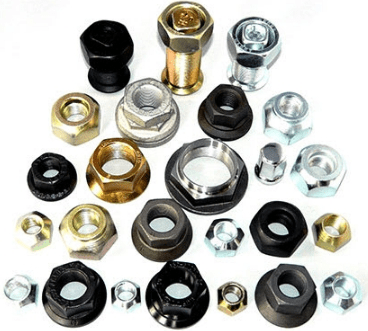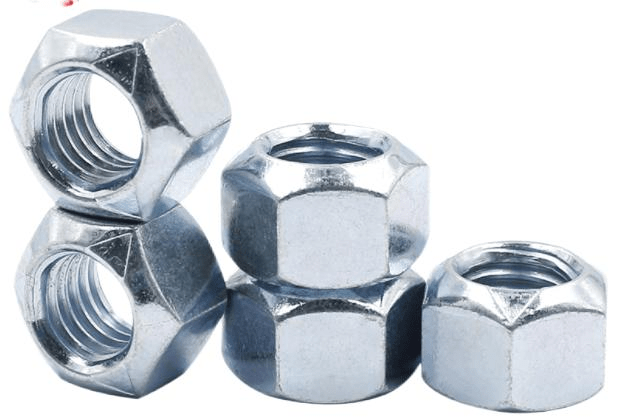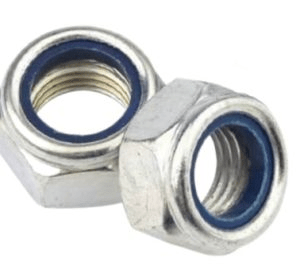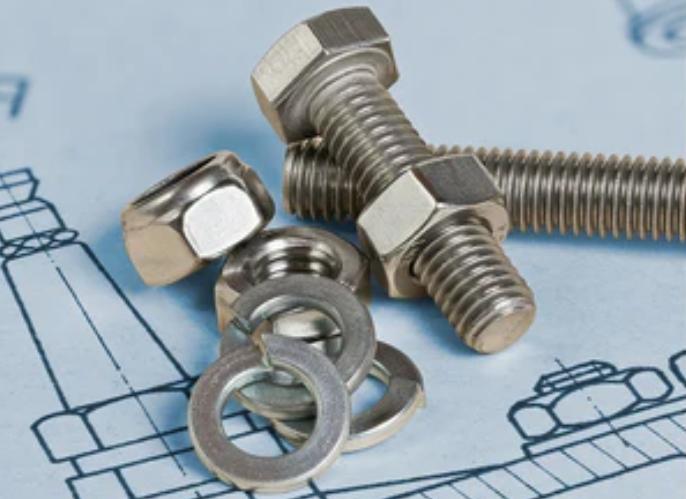Hexagon Locking Nuts
Specifications of Hexagon Locking Nuts
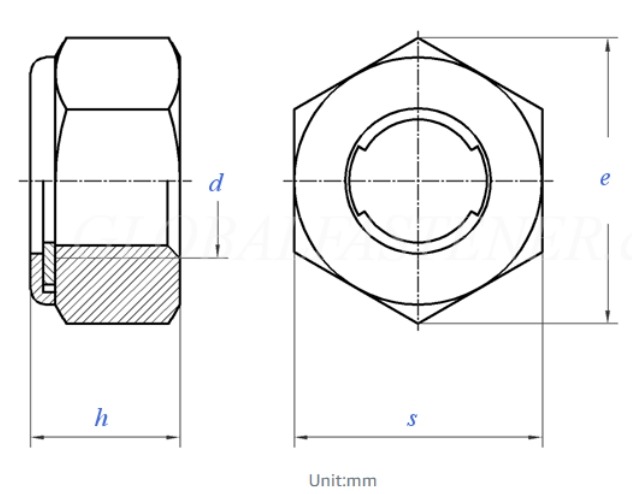
|
Screw Thread d |
M3 | M4 | M5 | M6 | M7 | M8 | M10 | M12 | M14 | M16 | |
| P | Pitch | 0.5 | 0.7 | 0.8 | 1 | 1 | 1.25 | 1.5 | 1.75 | 2 | 2 |
| Fine thread | – | – | – | – | – | 1 | 1 | 1.5 | 1.5 | 1.5 | |
| Fine thread | – | – | – | – | – | – | 1.25 | 1.25 | – | – | |
| e | min | 6.01 | 7.66 | 8.79 | 11.05 | 12.12 | 14.38 | 18.9 | 21.1 | 24.49 | 26.75 |
| h | max=nominal size | 3.7 | 4.2 | 5.1 | 6 | 7 | 8 | 10 | 12 | 14 | 16 |
| min | 3.4 | 3.9 | 4.8 | 5.7 | 6.5 | 7.5 | 9 | 11 | 12 | 14 | |
| S | max=nominal size | 5.5 | 7 | 8 | 10 | 11 | 13 | 17 | 19 | 22 | 24 |
| min | 5.32 | 6.78 | 7.78 | 9.78 | 10.73 | 12.73 | 16.73 | 18.67 | 21.67 | 23.67 | |
|
Screw Thread d |
M18 | M20 | M22 | M24 | M27 | M30 | M33 | M36 | M39 | ||
| P | Pitch | 2.5 | 2.5 | 2.5 | 3 | 3 | 3.5 | 3.5 | 4 | 4 | |
| Fine thread | 2 | 2 | 2 | 2 | 2 | 2 | 2 | 3 | 3 | ||
| Fine thread | 1.5 | 1.5 | 1.5 | – | – | – | – | – | – | ||
| e | min | 29.56 | 32.95 | 35.03 | 39.55 | 45.2 | 50.85 | 55.37 | 60.79 | 66.44 | |
| h | max=nominal size | 18 | 20 | 22 | 24 | 27 | 30 | 33 | 36 | 39 | |
| min | 16 | 18 | 20 | 22 | 25 | 28 | 31 | 34 | 37 | ||
| S | max=nominal size | 27 | 30 | 32 | 36 | 41 | 46 | 50 | 55 | 60 | |
| min | 26.16 | 29.16 | 31 | 35 | 40 | 45 | 49 | 53.8 | 58.8 | ||
|
①,Type V: Single-piece metal nuts are nuts without an insert,in which increased friction is created by the appropriate deformation of the prevailing torque element of the nut. Type M: Two-piece metal nuts are nuts, in which increased friction is created by an additional metal element inserted in the prevailing torque element of the nut. This type dose not have full loadability. ②,Material: Steel,Strength class (material):5,8,10,12(≤M16). Standard DIN 267-4 |
|||||||||||
Functions of Hexagon Locking Nuts
The main purpose of locking nuts is to secure threaded external joints or other pipe fittings. The working principle of a locking nut is to rely on the frictional force between the nut and the bolt for self-locking. When the bolt and nut are tightened against each other, the tooth tip of the bolt will tightly press against the wedge-shaped surface of the self-locking thread, generating a significant locking force.

